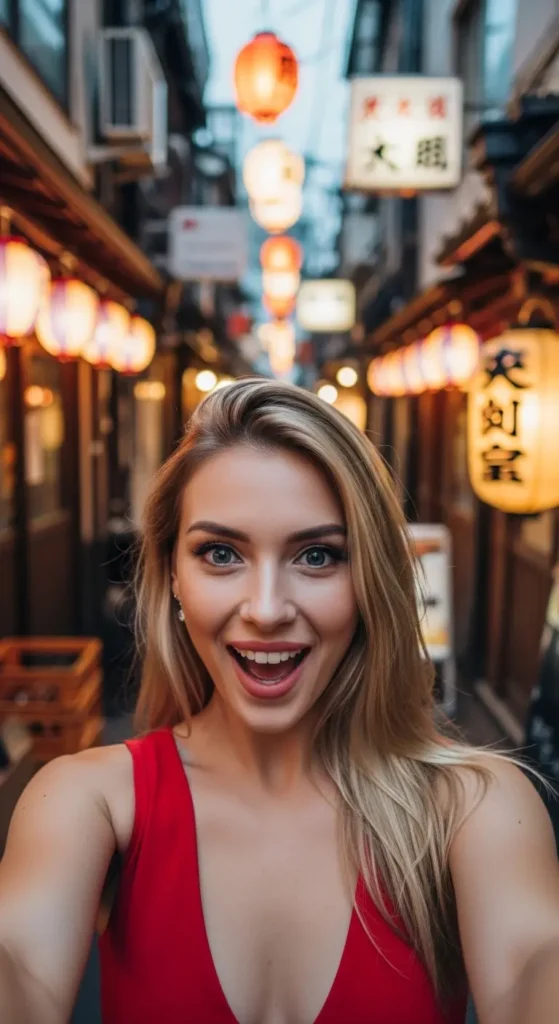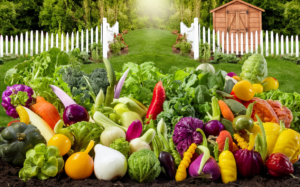Table of Contents
A Beginner’s Guide to Japanese Food: Your Passport to a Delicious Adventure
Picture this: you’re sitting in a restaurant, staring at a menu filled with unfamiliar names—ramen, donburi, izakaya. Maybe you love a good California roll, but you have a feeling there’s a whole world of Japanese food you’re missing out on. Where do you even begin?
You’re not alone. Japanese cuisine, or washoku, can seem intimidating at first glance. But beneath its elegant surface lies a incredibly approachable and deeply satisfying culinary world built on simplicity, seasonality, and sheer deliciousness. It’s not just about raw fish; it’s about comforting bowls of noodles, sizzling grilled meats, and delicate flavors that have been perfected over centuries.
This guide is your friendly starting point. We’re going to move beyond the sushi train and explore the heart of Japanese food. By the end, you’ll not only know what to order but you’ll understand the stories behind the dishes, helping you appreciate every bite.
What Makes Japanese Food So Special? The Soul of Washoku
Before we dive into specific dishes, it helps to understand the philosophy. Japanese cooking is deeply rooted in a principle called ichiju-sansai (“one soup, three dishes”). This isn’t just a meal structure; it’s a mindset that values balance, nutrition, and harmony.
Having lived in Tokyo for several years, I saw this philosophy in action every day, from a humble family dinner to a high-end kaiseki meal. The goal is never to overwhelm the palate but to celebrate each ingredient’s natural flavor. This is achieved through a few key pillars:
- Umami: You’ve probably heard this term. It’s the “fifth taste” beyond sweet, sour, salty, and bitter—a savory, mouthwatering quality. Japanese cuisine is a masterclass in umami, achieved through ingredients like katsuobushi (dried bonito flakes), kombu (kelp), soy sauce, and miso.
- Seasonality (Shun): In Japan, food is intimately connected to the seasons. Menus change to feature ingredients at their absolute peak. Eating asparagus in spring or sweet potato in autumn isn’t just a suggestion; it’s a way of life. This ensures the freshest, most flavorful experience possible.
- Presentation: The saying “we eat with our eyes first” is taken seriously in Japan. Food is arranged carefully to be visually appealing, often reflecting the current season with garnishes like a maple leaf in autumn or bamboo shoots in spring.
Your Handy Guide to Must-Try Japanese Dishes (Beyond Sushi)
Let’s break down the menu. Here are some foundational dishes you’re almost guaranteed to encounter.
1. The Wonderful World of Noodles
If you think Italian cuisine has a lock on pasta, think again. Japan offers an incredible variety of noodles, each with its own personality.
- Ramen: Forget the cheap instant packets of your college days. Authentic ramen is a serious art form. It consists of four key elements: the broth (which can be rich and pork-based tonkotsu, salty shoyu, or miso-based), the noodles, a savory seasoning called tare, and toppings like sliced pork (chashu), soft-boiled egg, and green onions. Every region in Japan has its own signature style.
- Soba: These thin, nutty-flavored noodles are made from buckwheat. They can be served chilled with a dipping sauce (zaru soba) for a refreshing summer meal, or hot in a flavorful broth (kake soba). Because they’re often healthier than other noodles, they’re a staple for many.
- Udon: The thick, chewy, and comforting white wheat noodles. Udon is often served in a mild, light broth and can be topped with tempura, a raw egg, or simply some green onions. It’s the ultimate Japanese comfort food on a chilly day.
2. Donburi: The Ultimate Bowl Meal
Donburi literally means “bowl,” and it refers to a category of dishes where a large bowl of steamed rice is topped with… well, just about anything. It’s a quick, affordable, and incredibly satisfying meal.
- Gyudon: Thinly sliced beef and onions simmered in a sweet and savory sauce made with soy and dashi, then piled over rice. Major chains like Yoshinoya and Sukiya have made this a national favorite.
- Katsudon: A deep-fried pork cutlet (tonkatsu) and egg simmered together in a savory sauce and served over rice. It’s a popular meal for students before exams because “katsu” sounds like the Japanese verb “to win.”
- Oyakodon: The name translates to “parent-and-child donburi,” a playful reference to its main ingredients: chicken and egg. It’s a simple, homey dish that’s incredibly flavorful.
3. Izakaya: The Japanese Answer to Tapas
An izakaya is best described as a casual gastropub. It’s a place where friends and colleagues go after work to drink beer or sake and share small plates of food. The menu is vast and perfect for trying a little bit of everything.
- Yakitori: Skewers of grilled chicken, but every part of the chicken is used—from the thigh (momo) to the skin (kawa) and even the cartilage (nankotsu). They’re typically seasoned with salt (shio) or a sweet soy-based sauce (tare).
- Edamame: You might know these as the steamed soybeans sprinkled with salt served at sushi restaurants. They’re a classic izakaya starter.
- Karaage: Japanese-style fried chicken. The chicken is marinated in soy, garlic, and ginger, lightly coated in flour or potato starch, and deep-fried to an impossibly crispy, juicy perfection.
4. Sushi & Sashimi: The Art of Simplicity
Yes, we said “beyond sushi,” but it’s still a cornerstone. Let’s clarify the terms.
- Sashimi: This is simply the freshest possible raw fish or seafood, sliced expertly and served without rice. It’s all about appreciating the pure flavor and texture of the ingredient.
- Nigiri: The iconic hand-pressed mound of vinegared rice topped with a slice of neta (which can be fish, egg, or other seafood). A small bit of wasabi is usually placed between the rice and the fish.
A pro tip from my first sushi bar experience in Japan: It’s generally acceptable to eat nigiri with your hands. Dip the fish side, not the rice side, lightly into your soy sauce to avoid the rice falling apart.
How to Dive In: A Beginner’s Action Plan
Feeling inspired? Here’s how to take the first step.
- Find a Local Spot: Look for a restaurant with a menu that has pictures. Don’t be shy about pointing—it’s a universal language!
- Start with Something Familiar: If the idea of raw fish is daunting, begin with a comforting bowl of udon or a tasty chicken katsu curry. There’s no wrong place to start.
- Be Adventurous, Gradually: On your next visit, maybe try a simple salmon nigiri or share a few yakitori skewers.
- Embrace the Etiquette (But Don’t Stress): It’s okay to slurp your noodles (it’s a sign of enjoyment!). It’s fine to lift your miso soup bowl and drink from it. The most important rule is to be respectful and enjoy yourself.
Frequently Asked Questions (FAQs)
Q: I’m a vegetarian. Is Japanese food vegetarian-friendly?
A: It can be tricky, but it’s possible! Many broths (like ramen and udon) are made with fish stock (dashi). You’ll need to look for specifically vegetarian or vegan restaurants, or dishes marked shojin ryori (Buddhist temple cuisine). Staples like vegetable tempura, agedashi tofu, and edamame are great options, but always ask about the broth.
Q: What’s the difference between soy sauce and tamari?
A: Great question! Tamari is a type of soy sauce that’s usually (but not always) wheat-free, making it a popular gluten-free alternative. It has a richer, slightly milder flavor compared to the saltier, sharper taste of regular soy sauce (shoyu).
Q: Is it rude to mix wasabi into my soy sauce?
A: In a high-end sushi restaurant, a purist might consider it a slight, as the chef has already applied the perfect amount of wasabi to each piece of nigiri. However, in a more casual setting, it’s widely accepted. Do what tastes best to you!
Q: What is a typical Japanese breakfast?
A: It’s often a savory affair, quite different from Western breakfasts. A classic spread might include grilled fish, steamed rice, miso soup, pickled vegetables (tsukemono), and a small rolled omelet (tamagoyaki).
Q: Where can I find reliable Japanese recipes to try at home?
A: For authentic and well-tested recipes, I highly recommend Just One Cookbook, a site run by a Japanese home cook based in San Francisco. Her step-by-step guides and explanations of ingredients are fantastic for beginners.
Your Delicious Journey Starts Now
Japanese food is more than a meal; it’s an experience. It’s a cuisine that invites you to slow down, appreciate the quality of each ingredient, and find joy in simplicity. From the steam rising off a bowl of ramen to the delicate artistry of a sushi platter, every dish tells a story.
So, the next time you see a Japanese menu, see it as an invitation to explore. Be curious, ask questions, and take a tasty risk. A world of incredible flavor is waiting for you just beyond the first bite.




